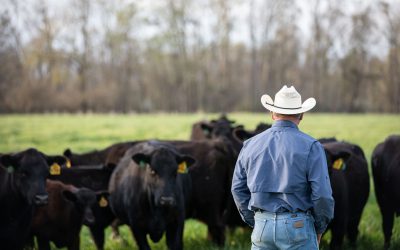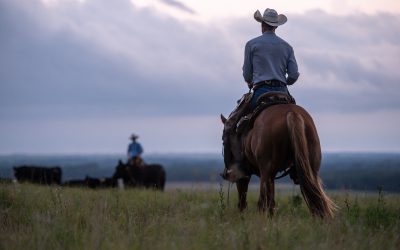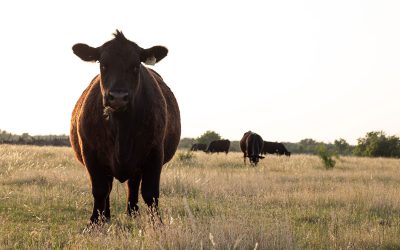
Only one right answer?
May 2, 2011
Mythbuster Monday on implants
I believe there are some areas of life where certain decisions are black and white, one way or another, where there’s only one right answer. But in the cattle industry, things are rarely that clear cut. Today’s myth is one of those.
Myth–If I want my cattle to grade well, I have to sacrifice the performance advantages of implants.
Fact–It is true that non-implanted cattle typically have higher marbling scores, but there’s a middle ground between nothing and the most aggressive strategy.
Being a Jackrabbit myself, I’m proud to say that South Dakota State’s Robbi Pritchard is considered one of the leading authorities on this balance.
He’s done dozens of implant-related trials at the SDSU feedlot, so he’s always a go-to source whenever we’ve got these kinds of questions.
A few months back, I wrote an article, “Four ways to marry implants and carcass quality goals.” But gosh darn those word counts—in the name of conciseness I had to cut out some of the good stuff. So I’m laying it all out here. This is what I learned from my chat with Dr. Pritchard:
- Delay implanting until they’re on full feed. “When you receive new cattle it might be two or three weeks until the intakes are where you expect them to be and the cattle are healthy. The calf that is going to get sick during the receiving phase, if there’s an implant in his ear it’s just going to exacerbate the problems that lead to the depressed quality on the other end. On the finishing cattle,we wait until we get them up on the final diet and then we bring them in and implant.”
- Implant more times,not fewer—just divide the dosage. “You’ll end up with the same performance and you don’t do as much damage to quality grade by spreading it out. The big impact of the dose is really on the front end. Something magic goes on if you give the dose as 2 pellets every 40 days so it ends up lasting 130 days. If you give you them 6 pellets on Day One, it also lasts 130 days. You get the same performance, but you never had as high a dosage in them at any one time.
- Match implants to nutrition.“If I was going for quality grade, the most important thing for me would be to never have a dosage that exceeds the caloric intake at any given stage of production. Calves out on native range, you better stay with the lowest potency products.”
- Don’t overdo it! “Over-implanted cattle gain remarkably less than their lean gain potential–and if you want a set of cattle that aren’t going to grade, that’s the set to own.”
- Watch out for overweights. “You’re going to increase the frame size of the cattle as you increase the aggressiveness of the implant program. An overweight is a horrific penalty, so if you have cattle that are going to be giving you problems, you’ll have to decrease the potency.”
- Use the right implants for your type of cattle. “As far as whether they’re red or green or black, I don’t have any sense one way or another. It would purely be about flesh and frame size and age.”
Whew—that’s quite a bit to think about. Maybe some people like to pretend that it’s a simple either/or answer so they don’t have to pay attention to all those variables, but I put faith you: loyal blog readers. You’ll let them know there’s a whole ‘nother world out there that involves some pretty fair compromises.
May your bottom line be filled with black ink,
~Miranda
You may also like
Progress from small steps
Every day is a chance to learn and get better. Thousands of others like my new friends in Alabama are taking steps to meet the shifts in consumer demand, and to know more. Small steps in the right direction can start now. Even if it’s just recording a snapshot of where you are today, a benchmark for tomorrow.
Not perfect, but working to get better
The CAB Cattleman Connection team heard its name called more than once in the virtual ceremonies, and each time came a sense of personal accomplishment, but even better: confirmation that we’re getting better at our craft. I hope that means we’re doing a better job for you.
Beefed up findings
Frank Mitloehner presents his findings on the animal ag sector’s impact on global warming. He explains how cattle counterbalance other fossil fuel sectors, proving that cattle are a solution and not a threat.



